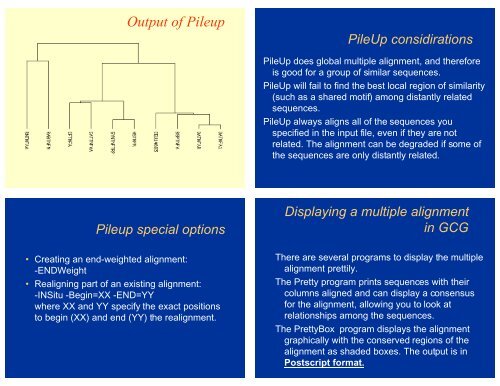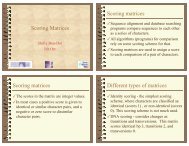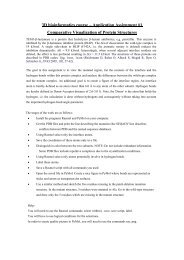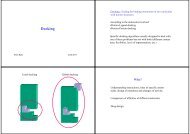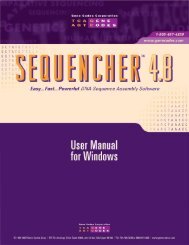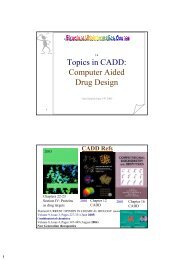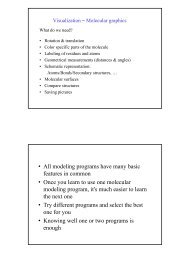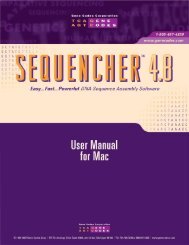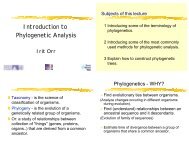Multiple Alignment - Bioinformatics and Biological Computing
Multiple Alignment - Bioinformatics and Biological Computing
Multiple Alignment - Bioinformatics and Biological Computing
Create successful ePaper yourself
Turn your PDF publications into a flip-book with our unique Google optimized e-Paper software.
Output of Pileup<br />
PileUp considirations<br />
PileUp does global multiple alignment, <strong>and</strong> therefore<br />
is good for a group of similar sequences.<br />
PileUp will fail to find the best local region of similarity<br />
(such as a shared motif) among distantly related<br />
sequences.<br />
PileUp always aligns all of the sequences you<br />
specified in the input file, even if they are not<br />
related. The alignment can be degraded if some of<br />
the sequences are only distantly related.<br />
Pileup special options<br />
Displaying a multiple alignment<br />
in GCG<br />
• Creating an end-weighted alignment:<br />
-ENDWeight<br />
• Realigning part of an existing alignment:<br />
-INSitu -Begin=XX -END=YY<br />
where XX <strong>and</strong> YY specify the exact positions<br />
to begin (XX) <strong>and</strong> end (YY) the realignment.<br />
There are several programs to display the multiple<br />
alignment prettily.<br />
The Pretty program prints sequences with their<br />
columns aligned <strong>and</strong> can display a consensus<br />
for the alignment, allowing you to look at<br />
relationships among the sequences.<br />
The PrettyBox program displays the alignment<br />
graphically with the conserved regions of the<br />
alignment as shaded boxes. The output is in<br />
Postscript format.


